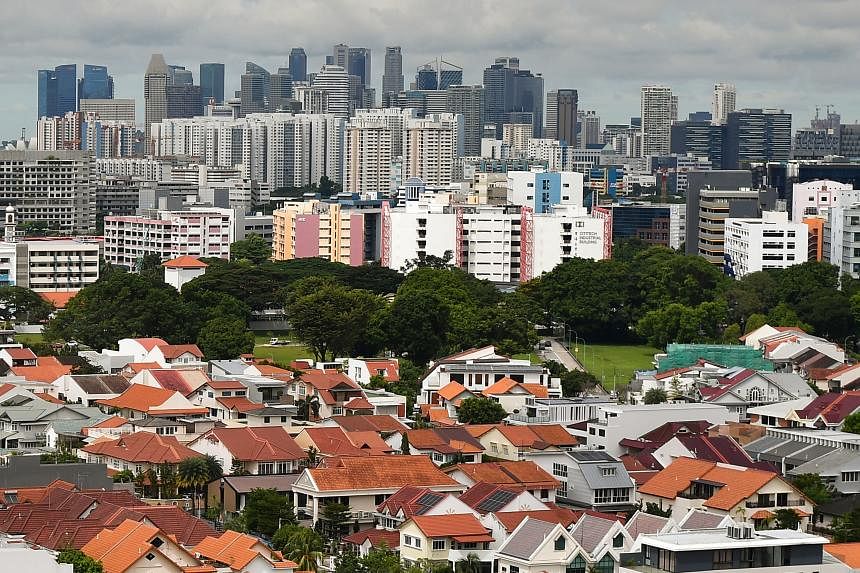SINGAPORE – Singapore’s private home prices grew at their slowest pace in two years in the fourth quarter of 2022, as sales fell more sharply than expected on a dearth of major new launches, rising mortgage rates, property curbs and a slowing economy.
But most analysts expect the momentum to continue in 2023, with prices projected to rise between 2 per cent and 5 per cent, if housing demand and household balance sheets remain resilient amid rising interest rates, higher home prices and property curbs.
With about 11,000 new private homes (excluding executive condominium or EC units) to be launched in 2023, pent-up demand from those who sat out the market due to fewer options in 2022 could return, said Ms Chia Siew Chuin, head of residential research at JLL Singapore.
In the fourth quarter, private home prices grew just 0.4 per cent. This was slightly higher than the Urban Redevelopment Authority’s (URA) flash estimate of a 0.2 per cent gain, but lower than the third quarter’s 3.8 per cent rise and second quarter’s 3.5 per cent increase.
It is also the slowest quarterly growth since the first quarter of 2020, when prices fell 1 per cent.
For the whole of 2022, private home prices grew 8.6 per cent, slowing from 2021’s 10.6 per cent rise, according to URA data released on Friday.
“In the first three quarters of 2022, price growth was underpinned by strong economic growth, upgrader demand and rising rents. But this was tempered in the fourth quarter by souring macro-economic conditions, high mortgage rates and a fresh round of cooling measures,” said Ms Tricia Song, CBRE head of research for South-east Asia.
OrangeTee & Tie’s senior vice-president of research and analytics Christine Sun noted: “Buyers in Singapore are starting to feel the impact of higher mortgage payments, but most can still service their loans as stringent property curbs are in place to ensure buyers remain prudent, and our job growth is still healthy.”
HDB resale prices have continued to rise, albeit at a slower pace, which would sustain demand from upgraders, Cushman & Wakefield research head Wong Xian Yang said.
New home sales plunged by 68 per cent to a mere 690 units in the fourth quarter – the lowest tally since the fourth quarter of 2008, when 419 units were transacted amid the global financial crisis.
For the whole of 2022, new home sales fell 45.5 per cent to 7,099 units, compared with 13,027 units in 2021.
This came about as developers held back new launches, resulting in a mere 504 uncompleted private homes (excluding EC units) launched for sale in the fourth quarter, down from 1,455 units in the previous quarter. For the whole of 2022, developers launched 4,528 units, compared with 10,496 units in 2021.
Healthy demand for the upcoming new launches in 2023 could give developers more confidence to replenish their landbank, Mr Wong said.
Resale transactions also saw sharp falls in 2022. The number of homes resold fell 27.6 per cent to 2,694 units in the fourth quarter, with the transactions making up 75 per cent of all private homes sold. For the whole of 2022, resales dropped by 29.7 per cent to 14,026 from 19,962 in 2021.
In 2022, landed property prices grew 9.6 per cent, outperforming the non-landed market, which grew by 8.1 per cent. In the fourth quarter alone, landed prices rose 0.6 per cent, compared with a 1.6 per cent gain in the third quarter.
Non-landed prices gained 0.3 per cent after rising 4.4 per cent in the previous quarter, as prices for suburban homes fell 2.6 per cent on a lack of attractive new launches, following a 7.5 per cent gain in the previous quarter.
ERA Realty research and consultancy head Nicholas Mak believes that suburban property prices should recover in the first quarter of 2023 as more new launches hit the market. Over 30 per cent of an estimated 10,200 units to be launched are located in the suburbs, he said.
For the full year, private non-landed homes in the city fringe outperformed those in the prime district and suburbs, with a 9.7 per cent gain.
Prices in the prime area grew 4.8 per cent and those in the suburbs grew 9.3 per cent in 2022.
The rental market rose at a more moderate pace, up 7.4 per cent in the fourth quarter compared with an 8.6 per cent gain in the third quarter, amid slower demand over the year-end holiday period.
But in 2022, private home rents shot up 29.7 per cent compared with a 9.9 per cent rise in 2021, due to lower new housing stock, rising home prices and the introduction of a 15 month wait-out period for those downgrading from private homes to Housing Board flats, which drove some to rent.
Rents of landed properties grew 6.3 per cent compared with a 10.9 per cent increase in the previous quarter, while rents of non-landed properties rose 7.5 per cent, against an 8.3 per cent gain previously.
In the non-landed market, apartments in the suburbs saw the biggest rental hikes at 8.2 per cent, followed by the prime and city fringe areas at 7.3 per cent each.
The Government has been ramping up the supply of private housing. According to the URA, 19,291 units (including ECs) will be completed in 2023, with 12,824 more units slated for completion in 2024.
In total, about 32,100 units (including EC units) are expected to be completed in 2023 and 2024, which is twice the 15,900 units completed in 2021 and 2022.


